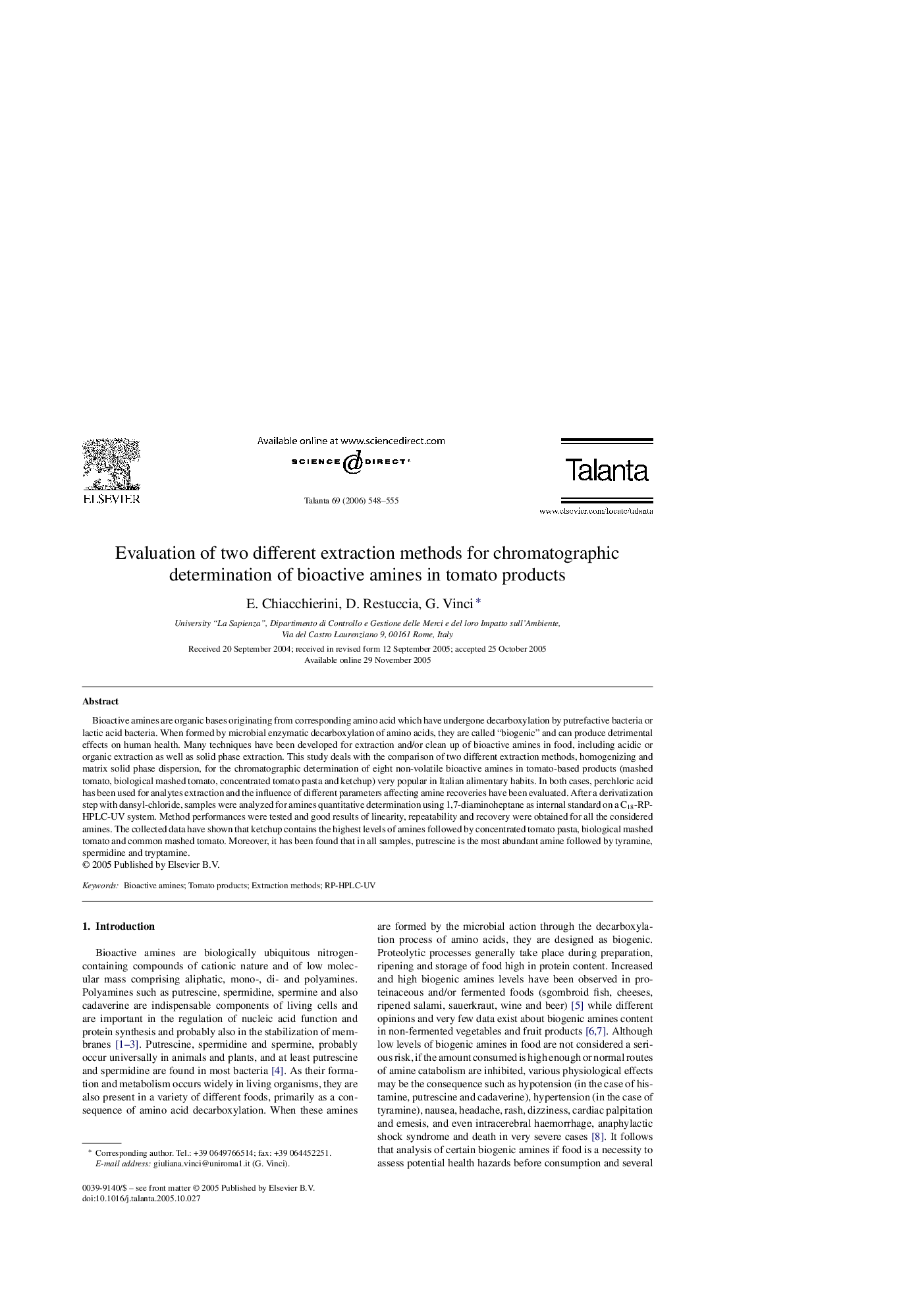| Article ID | Journal | Published Year | Pages | File Type |
|---|---|---|---|---|
| 1247280 | Talanta | 2006 | 8 Pages |
Bioactive amines are organic bases originating from corresponding amino acid which have undergone decarboxylation by putrefactive bacteria or lactic acid bacteria. When formed by microbial enzymatic decarboxylation of amino acids, they are called “ biogenic” and can produce detrimental effects on human health. Many techniques have been developed for extraction and/or clean up of bioactive amines in food, including acidic or organic extraction as well as solid phase extraction. This study deals with the comparison of two different extraction methods, homogenizing and matrix solid phase dispersion, for the chromatographic determination of eight non-volatile bioactive amines in tomato-based products (mashed tomato, biological mashed tomato, concentrated tomato pasta and ketchup) very popular in Italian alimentary habits. In both cases, perchloric acid has been used for analytes extraction and the influence of different parameters affecting amine recoveries have been evaluated. After a derivatization step with dansyl-chloride, samples were analyzed for amines quantitative determination using 1,7-diaminoheptane as internal standard on a C18-RP-HPLC-UV system. Method performances were tested and good results of linearity, repeatability and recovery were obtained for all the considered amines. The collected data have shown that ketchup contains the highest levels of amines followed by concentrated tomato pasta, biological mashed tomato and common mashed tomato. Moreover, it has been found that in all samples, putrescine is the most abundant amine followed by tyramine, spermidine and tryptamine.
